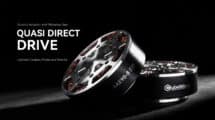The National Science Foundation Mind, Machine and Motor Nexus (M3X) program has awarded multiple wearable exoskeleton related research projects millions of dollars in funding. The M3X is structured to support “fundamental research at the intersection of mind, machine and motor.” A more specific focus of the program is a mandatory integration of human intent and behavior and interaction with intelligent engineered systems with motor manipulation; practically tailored made for wearable robotics.
Research in this field is supposed to intersect new computable theories (such as machine learning), but unlike pure software research, M3X research has to lead to direct motor output.
The M3X program has either funded or has approved to fund 27 research projects. Three out of the approved projects have “exoskeleton” in their title and one project focuses on supernumerary robots:
- Collaborative Research: Predicting and Optimizing User Comfort for Lower-limb Exoskeletons through Mutual Motor Adaptations – Southern Methodist University and a second award to Pennsylvania State Univ University Park – Create a mechanism for a wearable robot to detect the user’s comfort and make adjustments to the wearable device on the fly.
- Improving Human-Exoskeleton Fluency Through an Investigation of Dynamic Control Parameters – University of Michigan Ann Arbor – Investigate the trust and fluency of motion between user and exoskeleton by changing control parameters. Data will be collected by alternating the timing of applied force by the wearable, sometimes even purposefully misfiring to investigate the building of mistrust between user and exo over time.
- Investigating the Relationship Between an Intelligent Trunk Exoskeleton and Its Wearer as a Basis for Improved Assistance and Rehabilitation: University of Wyoming – Characterize the interactions between an exoskeleton for lower back pain and the user’s motions.
- Investigation of User-Interface and Human-Robot Performance for Supernumerary Robots – University of California Davis – Advance the fundamental knowledge between man and machine when using a robotic “third arm.”
The NSF awards appear to be part of a broader increase in the interest and funding for exoskeleton technology. Congratulations to all the winning teams! Special thanks to Bill Billotte from ASTM International for spotting the awards.
Reference:
Mind, Machine and Motor Nexus (M3X), NSF.gov, as accessed on Nov 6, 2019, https://www.nsf.gov/awards/award_visualization.jsp?org=NSF&pims_id=505402&ProgEleCode=058Y&from=fund








Add Comment